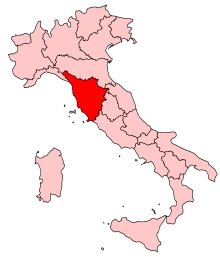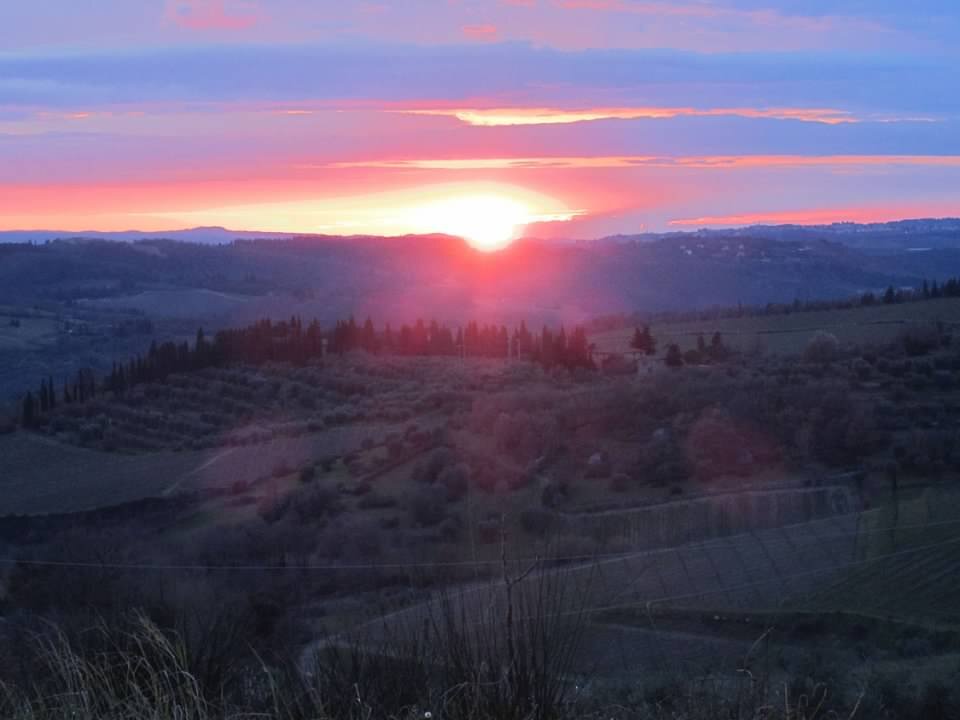Introduction to the region: Tuscany
Why do rolling Tuscan hills often come to mind for people when you ask them to picture Italy? As I aim to explore on my website at large, the twenty regions of Italy are incredibly varied and diverse; yet, this image of Tuscany is powerful and persistent. Well, there is historical precedent for this. As explored in detail in David Gilmour’s The Pursuit of Italy (and many other sources) the dominance of Tuscany as a representation of the ‘real’ Italy has been constructed over centuries and language has played a pivotal role. Harking back to Dante Alighieri and well before the unification of Italy in the 19th century, the Tuscan ‘dialect’ (it is really a full language) was used in what is known today as the region of Tuscany. To be more accurate, Dante is emblematic of Florence, and he did much for promoting the Tuscan dialect; specifically, he wrote his works in the language instead of the formal Latin. After his death in the early 14th century, the use of the Tuscan language was celebrated as his magnum opus The Divine Comedy rose to popularity. Yet in addition to Dante’s endorsement and use of the Tuscan vernacular, there were others; Petrarch, Giovanni Boccaccio, Niccolò Machiavelli, and Francesco Guicciardini are some of the famous figures to use and promote the Tuscan dialect.
According to Gilmour, in the early 17th century, celebrated Tuscan astronomer Galileo also insisted that “scientific work should be conducted in the vernacular.” He goes on to explain other practical reasons for Tuscan’s ascent; the spoken and written languages were similar (not the case with all dialects) and its sounds and grammatical rules were similar to Latin. In the early 19th century, Alessandro Manzoni also standardized the use of his language in the canonized I Promessi Sposi (The Betrothed); further making the case for Tuscan.
When Italy was unified in 1861, Tuscan became the ‘official’ language of Italy. Thus, in addition to the geographical position of Tuscany, strategically placed between the north and the south in the ‘heart’ of the country, there are historical and specifically linguistic reasons for why we make Tuscany the ‘representation’ of Italy. This is an extremely abridged version of the history; I highly recommend reading all of chapter 3 in The Pursuit of Italy as Gilmour does an excellent job of discussing the various dialects all across the Italian peninsula; their origins and contemporary implications.
Florence is still touted as the ‘best place to learn Italian’. Home to Michelangelo’s David and the Uffizi, Florence and the region of Tuscany certainly have a strong appeal, especially for first time visitors. I must say, however, you will be hard pressed to find something in this region that is ‘undiscovered’ and sometimes this idea makes me feel a bit more pessimistic towards Lazio’s neighbor. Umbria (another neighboring region) stirs only positive feelings and desires to explore further, but a proposed trip to Tuscany can leave me feeling mixed. After writing these entries on the Tuscan region, however, I feel like my love for the region has been revitalized.
A trip to Toscana in the fall (or spring) is a ‘thing of beauty …a joy forever’ to quote the Romantic poet John Keats. Further, visiting Cortona will not feel like a 'Disneyland under the Tuscan Sun, if you plan appropriately. I am ready to start planning another trip to Saturnia, famous for the gorgeous cascading hot springs in the countryside. Consequently, although Tuscany is certainly not undiscovered, it is absolutely worth as many visits as time and money can afford you.


